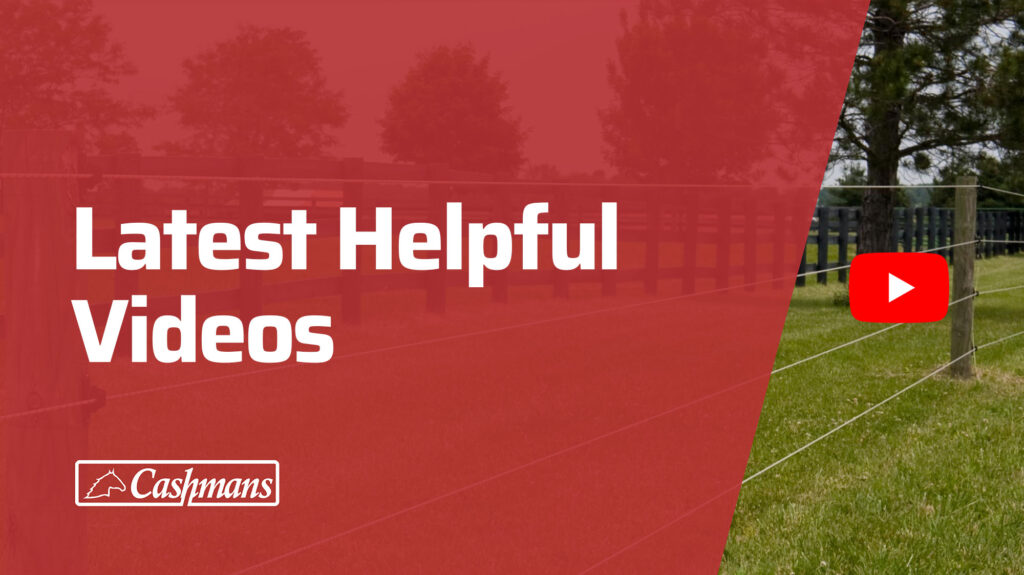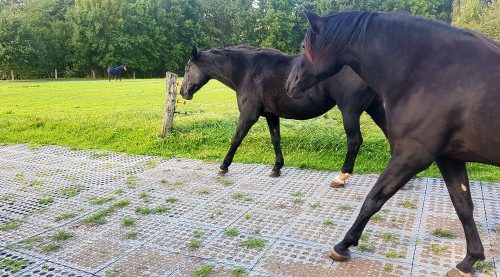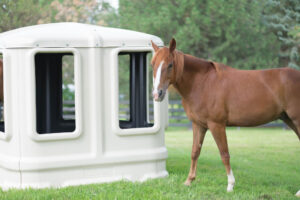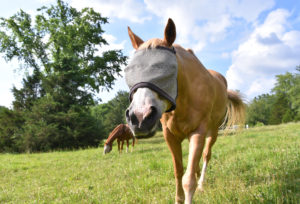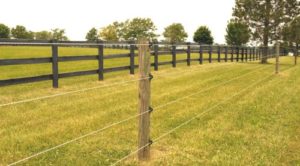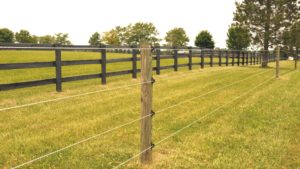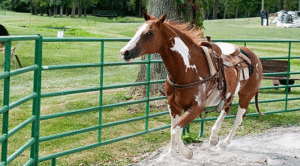
On The Fence – Part 1 of 4
Lisa Kiley – January 2020
Originally published in Horsemen’s Corral Magazine – link to magazine
A step-by-step series on pasture fencing for your horse farm – Part 1 of 4
It’s that time of year again when we start making resolutions and planning for the upcoming year. When the thermostat plummets and you find yourself spending more time in the house than in the barn, it’s a great time to start thinking about projects around the farm. Putting up horse fencing is a big investment and with all the choices and considerations, it can easily become overwhelming. In this series on fencing we will cover everything from planning and preparation to materials selection, installation and maintenance. By the time spring arrives, you will have all the information you need to get outside and make your fencing resolution a reality.
For the beginning stages of the planning process, gathering the right information is key. Doing your homework will save time, energy, and money when it comes to getting the project done this spring. So, before you even decide what type of fencing you will need (we’ll investigate that next month). Here are some basics to check off your list to start off on the right foot:
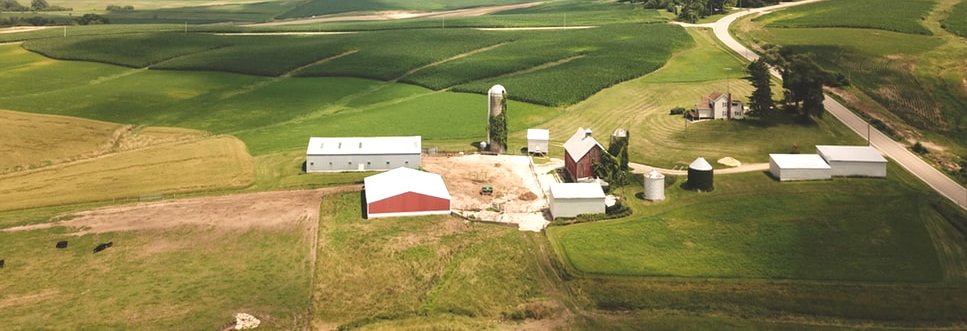
Know your property
The county recorder’s office or assessor can supply you with information on property lines to make sure that you are planning your fence build within its boundaries. Next, by acquiring an aerial map, it will allow you to see a better perspective of topography. Taking note of trees, streams or other natural features will help in anticipating challenges of installation and may dictate material choices. Knowing soil types on the property will help with preparation for installation and maintenance for the best grazing opportunities.
Research Legalities
Even if you know where your property lines are, there may be set back regulations which require your fence to be so far off the property line. In addition, local ordinances may dictate if you will need permits to complete projects or if there are any other restrictions to be considered. If you have neighbors close by, think about issues that may arise due to proximity. Laws for Line Fences exist in each state, so make sure that you familiarize yourself before starting any project. As a horse owner, you are liable if a horse on your property gets loose. Making sure horses are contained by adequate fencing is imperative.
Understand the Herd
Even if you only have a few horses on the property, understanding herd dynamics is helpful. Horse safe fence should be the foremost concern, but it’s not just about the materials used. As you are planning pastures & turn outs, avoid tight corners and consider rounded fence lines. When horses are initially turned out together, there can be aggressive behavior while the order of the herd is determined. Avoid creating areas that present a risk of “trapping” a lower ranking horse or keeping them away from food or water sources. If horses will not make compatible pasture mates, there should be options to keep them separated. Smaller pens near the barn can work well to separate horses, especially at feeding times.
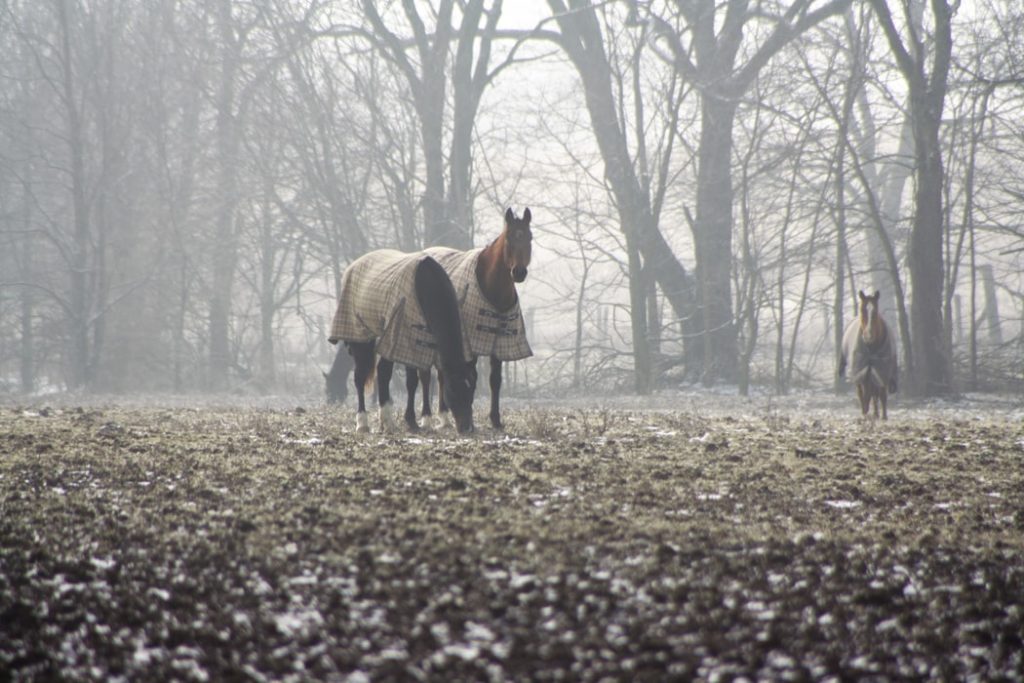
Pasture Utilization
Using grass as part of the horse’s food source requires close management and is best achieved by utilizing rotational grazing. This will require additional fencing and a plan on how to easily move horses from one spot to the next. The number of horses and the size of the pastures will determine how often you will need to rotate. Having an all-weather turn out area is a great investment, allowing horses to get outside without risk of damaging grass and creating mud during wet weather is essential in a rotational grazing plan. This type of area does require amending the ground to make it mud resistant.
Map it Out
After you’ve gathered the above information, you can start mapping out your fencing plan. You will need to know your dimensions and how many feet the parameters are in order to calculate how much fence you will need. Don’t forget to plan for gates. Having at least two access points per pasture is helpful, especially during muddier times of the year. Make sure gates are big enough to allow passage of equipment and consider adding a smaller gate for day to day use. Depending on pasture layout, you will want to determine the closest accessibility to both water and electricity. Thinking through your daily chores is critical to mapping the most efficient layout.

Make a Budget
Deciding on a budget early in the process will help keep you on track. Fencing can be expensive, but there are ways to make the process more economical, taking the time to do research can translate to savings. Make sure installation is also part of the budget. If you’re a do-it- yourselfer, factor in the cost of rental equipment. Check reviews and recommendations on fence types to determine if the project is something you will be able to handle yourself. Thinking of hiring an installer? It’s a good idea to check references and get on their schedule early. Waiting to schedule in the spring could mean not getting your fencing project completed until the end of the summer. If your budget won’t allow for the full plan now, look at opportunities for phasing the project. By planning ahead, you can build on what you have rather than re-doing fencing when you are able to expand.
Next month we will discuss choosing the right materials for your fencing project.
Cashmans Helpful Resources
Recommended For You
-
-
Stable Ground Mud Solution
$17.50




